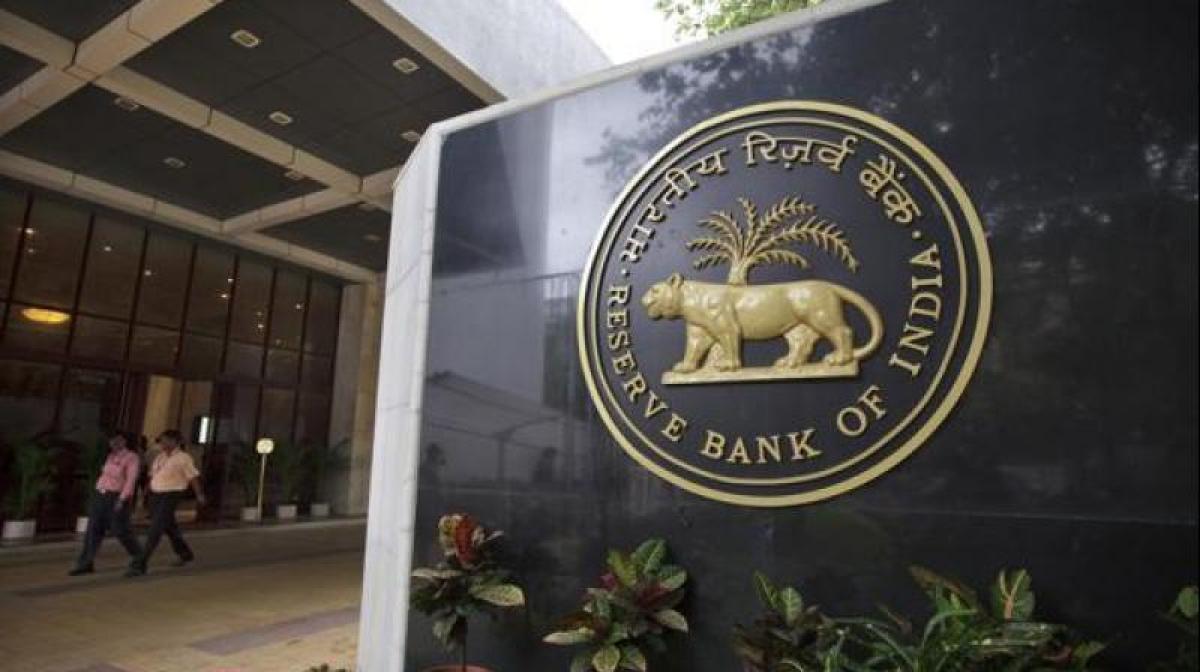Live
- Women of steel: Promoting environment conservation, come what may
- APSSDC signs tripartite MoU to upgrade skills of AP youth
- ‘AAP govt settling Rohingyas in Delhi, giving voter cards’
- Students advised to pursue excellence through learning
- Cold wave hits AP, Telangana: temperatures plunge to single digits
- AAP replaces Gahlot with another Jat face in Cabinet
- A Rising Star in Indian Cinema
- Telangana Introduces EV Policy to Prevent Severe Air Pollution
- Group- III exams conclude
- Ghose probe panel to summon KCR, Harish
Just In

The Reserve Bank of India on Wednesday used the room provided by slumping inflation to cut its main policy rate - the first easing by an Asian central bank this year - but it kept the market guessing on whether there\'s more space for trimming.
The Reserve Bank of India on Wednesday used the room provided by slumping inflation to cut its main policy rate - the first easing by an Asian central bank this year - but it kept the market guessing on whether there's more space for trimming.
The rate cut is the RBI's first since one of the same size in October and a show of confidence in a country that has experienced a surge in foreign investments into debt and shares this year.
Cutting the repo rate by 25 basis points to 6.00 percent - the lowest since November 2010 - had been widely anticipated as a slump in food prices sent June consumer inflation to a more than five-year low of 1.54 percent.
The RBI said reduced prices provided "some space" for monetary policy accommodation: inflation is now well below the RBI's 4 percent target and its projection of 2.0-3.5 per cent in April-September.
The rate cut will likely ease some of the pressure from the government and markets for action to lift the economy, which had annual growth in January-March of 6.1 percent - fast by global standards but India's lowest number in over two years.
Higher Inflation Ahead?
But the RBI also retained its "neutral" stance, and warned inflation could accelerate, while pinning future action on data - a view that leaves open the question of whether it will cut rates further, as sought by the government.
As a result, the RBI said it wanted more confidence that inflation would move "close to 4 percent on a durable basis".
The monetary policy committee "will continue monitoring movements in inflation to ascertain if recent soft readings are transient or if a more durable disinflation is underway," the RBI said.
The central bank stuck to its inflation projections, including that price increases could accelerate to 3.5 percent to 4.5 percent in October-December.
It attributed the prediction to factors such as planned pay hikes for government employees, a recovery in food prices, and the impact on prices from the July 1 launch of a national goods and services tax.
Radhika Rao, an economist at DBS said the decision lets the RBI "be non-committal on the future course of action, retaining the flexibility to react to the evolving inflation trajectory."
India's Economic Affairs Secretary Subhash Chandra Garg called the rate cut an "important step" to ensure sustained growth for stable, moderate inflation.
Nonetheless the RBI is likely to stay under pressure from those who feel its inflation projections are too high, and from government officials who believe efforts to curb food and energy prices will keep inflation low for some time.
Four members of the committee, including Governor Urjit Patel, voted to cut rates by 25 bps, while one voted for a 50 bps cut and one voted to leave rates unchanged.
The RBI's next policy meeting is on Oct. 3-4.
India Stands Alone
Still, in cutting rates, India's central bank stands out from other regional policymakers who are holding them steady in part to avoid volatility in foreign flows as the Federal Reserve weighs whether to raise U.S. rates for a third time this year.
The European Central Bank is also seen as potentially easing up on its bond purchases.
As such, the rate cut signals how India's standing with foreign investors has remained strong - and its confidence that it will remain so.
Inflows into debt and shares have reached USD 30.4 billion this year, including on hopes for an improving economy, economic reforms from the government and a low current account deficit.
The rupee on Wednesday surged to as much as 63.59 to the dollar, its highest since July 2015, although bonds were range-bound while the broader NSE share index ended down 0.3 percent.
The RBI on Wednesday also cut the reverse repo rate by 25 bps to 5.75 percent.

© 2024 Hyderabad Media House Limited/The Hans India. All rights reserved. Powered by hocalwire.com







